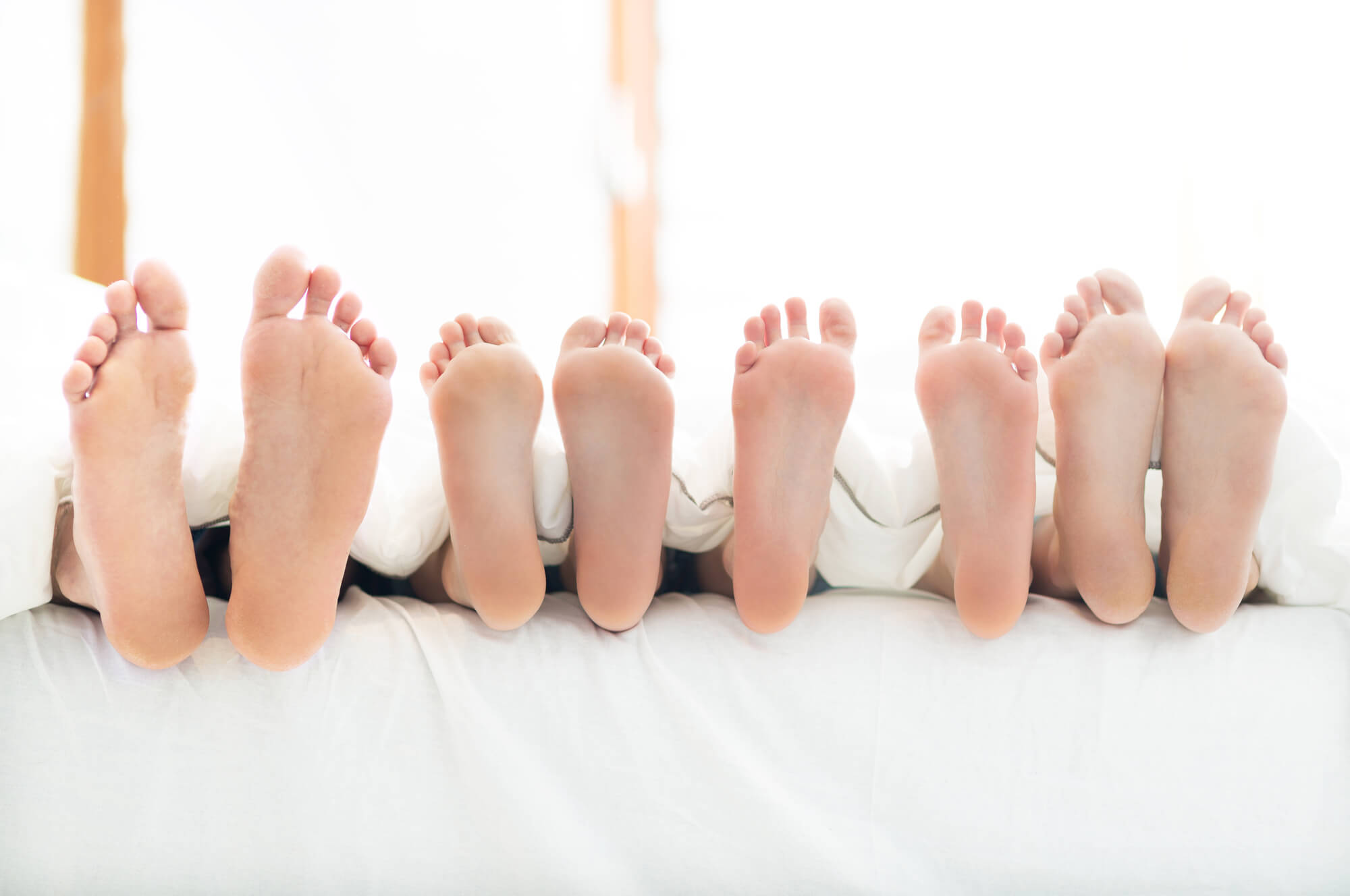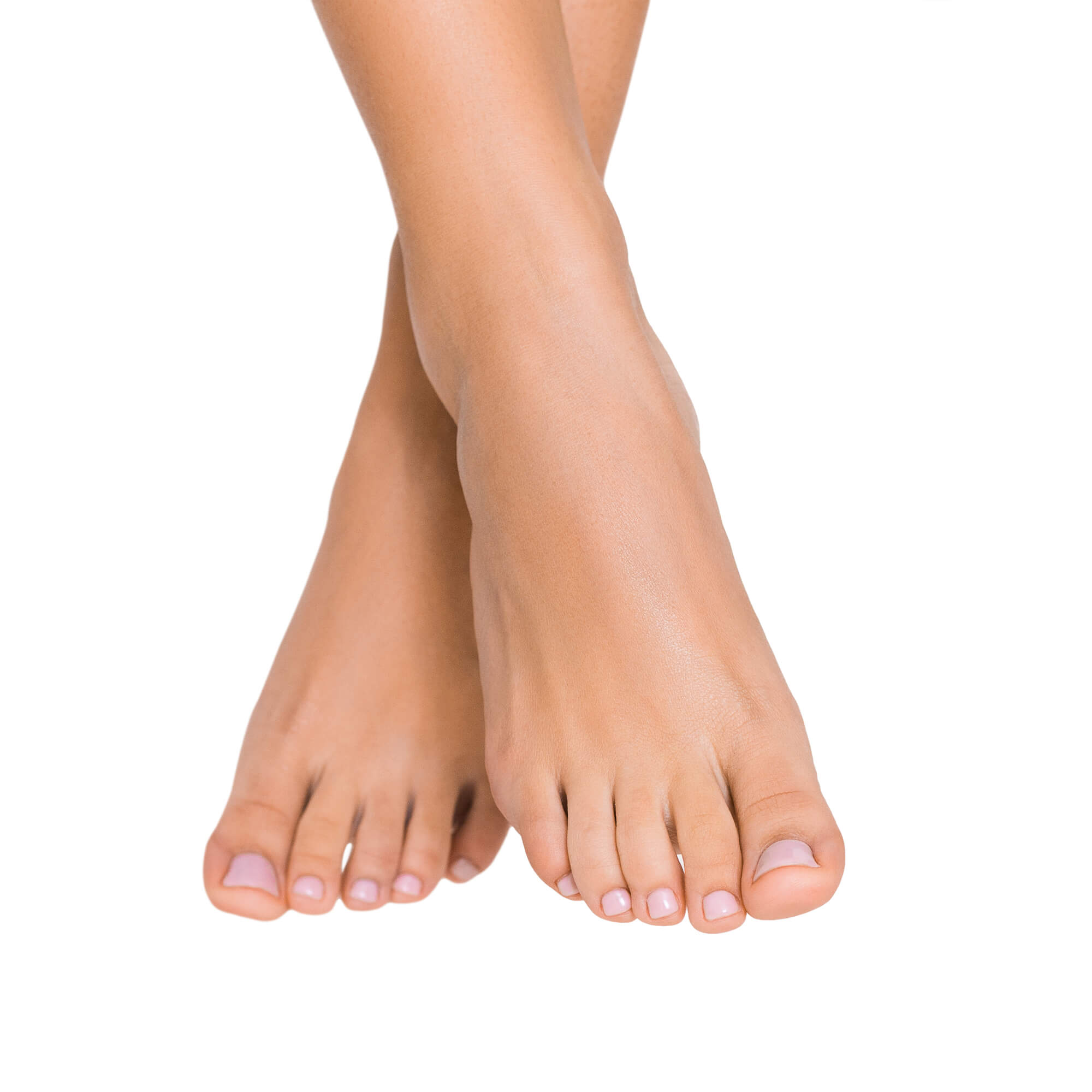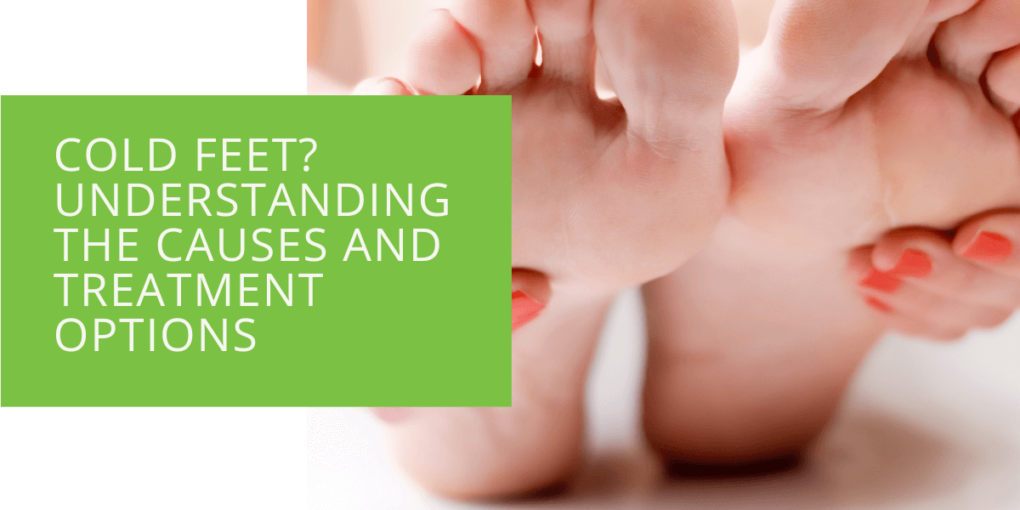Cold Feet? Understanding the Causes and Treatment Options
Do you always feel cold, even when the rest of your body is warm? Do your hands and feet feel cold even when wearing warm clothing? If you experience cold feet frequently, you may be wondering what's causing this problem. In this article, we'll examine the causes of cold feet, explain how they can be treated, and advise you on when to see a podiatrist for help.
Causes of Cold Feet
1. Poor Circulation
Poor circulation is a common cause of cold feet. If your body isn't getting enough blood flow to your feet, they can feel cold and numb. Poor circulation can be caused by a variety of factors, including:
- Peripheral artery disease (PAD)
- High blood pressure
- Smoking
- Diabetes
- Obesity
Symptoms of poor circulation include cold feet, numbness, tingling, and a pale or blue color in the skin. Treatment options may include lifestyle changes, medications, or medical procedures.

2. Peripheral Neuropathy
Peripheral neuropathy is a condition that occurs when the nerves that carry messages from the brain and spinal cord to the rest of the body are damaged. When the nerves in your feet are damaged, they can't send signals properly, leading to cold feet.
Peripheral neuropathy can be caused by a variety of factors, including:
- Diabetes
- Alcoholism
- Vitamin deficiencies
- Autoimmune diseases
- Infections
Symptoms of peripheral neuropathy include cold feet, tingling, burning, and pain. Treatment options may include medications, lifestyle changes, or medical procedures.
3. Raynaud's Disease
Raynaud's disease is a condition that causes the blood vessels in your fingers and toes to constrict, limiting blood flow and causing them to feel cold and numb. Raynaud's disease can be triggered by cold temperatures or stress.
Symptoms of Raynaud's disease include cold fingers and toes, numbness, and tingling. Treatment options may include lifestyle changes, medications, or medical procedures.
4. Underlying Medical Conditions
Cold feet can also be a symptom of an underlying medical condition, such as:
- Anemia
- Underactive thyroid
- Artery disease
- Red blood cell disorders
- Nerve damage
Symptoms of these medical conditions vary, but they can include cold feet, fatigue, weakness, and difficulty breathing. Treatment options depend on the underlying condition and may include medications, lifestyle changes, or medical procedures.

Symptoms of Cold Feet
Cold feet can be a frustrating and uncomfortable problem, and may be accompanied by a range of symptoms. Some common symptoms of cold feet include:
- A feeling of coldness or numbness in the feet or toes
- Pain or discomfort in the feet or toes
- Tingling or burning sensations in the feet or toes
- Changes in skin color, such as redness or blueness
- A sensation of pins and needles in the feet or toes
- Reduced sensitivity or decreased sensation in the feet or toes
In some cases, cold feet may be accompanied by other symptoms such as leg pain or cramping, difficulty walking or standing, or weakness in the legs or feet. If you experience any of these symptoms along with cold feet, it's important to seek professional medical attention.
It's also important to note that in some cases, cold feet may be a sign of a more serious underlying condition, such as peripheral artery disease or nerve damage. If you experience persistent or severe cold feet, it's important to see a podiatrist or healthcare provider for a proper diagnosis and treatment.

Treatment Options for Cold Feet
The treatment for cold feet depends on the underlying cause. Here are some treatment options that your podiatrist may recommend:
1. Lifestyle Changes
If poor circulation is causing your cold feet, your podiatrist may recommend lifestyle changes to improve blood flow, such as:
- Quitting smoking
- Exercising regularly
- Wearing warm clothing and shoes
- Avoiding tight clothing that restricts blood flow
- Elevating your feet when sitting or lying down
2. Medications
Your podiatrist may recommend medications to improve blood flow to your feet, such as:
- Blood thinners to prevent clots
- Vasodilators to widen blood vessels
- Medications to lower blood pressure
- Antidepressants or anticonvulsants to treat nerve pain
Your podiatrist may also prescribe medication to treat the underlying medical condition causing your cold feet, such as anemia or an underactive thyroid.
3. Medical Procedures
If lifestyle changes and medication doesn't alleviate your cold feet, your podiatrist may recommend a medical procedure, such as:
- Angioplasty to widen blocked arteries
- Nerve decompression surgery to relieve pressure on nerves
- Botox injections to relax muscles and improve blood flow
Your podiatrist will determine the best course of treatment based on the underlying cause of your cold feet.
When to See a Podiatrist
If you're experiencing persistent cold feet, it's important to see a podiatrist for a proper diagnosis and treatment. In addition to cold feet, other symptoms that may require medical attention include:
- Pain or cramping in the legs or feet
- Open sores or wounds on the feet that won't heal
- Changes in skin color or temperature in the feet or legs
- Thickened or discolored toenails
- Numbness or tingling in the feet
Your podiatrist can help you determine the underlying cause of your symptoms and develop a treatment plan that's right for you.

Prevention of Cold Feet
Cold feet can be prevented by taking some simple steps to promote good circulation and maintain healthy feet. Here are some ways to prevent cold feet:
1. Wear Warm Clothing and Shoes in Cold Temperatures
When you're going to be outside in cold weather, it's important to dress warmly and wear shoes that keep your feet dry and insulated. Choose footwear that fits well, provides adequate support, and is designed for the activities you'll be doing. Avoid tight shoes that restrict blood flow, and opt for breathable materials that allow air to circulate and help keep your feet dry.
2. Exercise Regularly to Improve Blood Flow
Regular exercise can improve circulation and help keep your feet warm. Walking, running, swimming, and cycling are all great ways to get your blood pumping and improve your cardiovascular health. If you have a sedentary job, take breaks to move around and stretch your legs throughout the day.
3. Avoid Exposure to Cold Temperatures and Extreme Weather
If you know you'll be exposed to cold temperatures or extreme weather, take steps to protect your feet. Wear warm socks and insulated shoes, and avoid exposing your feet to wet or damp conditions. Keep your feet dry by changing your socks and shoes frequently, and use foot powder to help absorb moisture.
4. Manage Underlying Medical Conditions
Suppose you have an underlying medical condition that can contribute to cold feet, such as diabetes or peripheral artery disease. In that case, it's important to work with your healthcare provider to manage your condition and keep it under control. Follow your treatment plan, take any prescribed medications as directed, and maintain regular check-ups to monitor your condition and make any necessary adjustments to your treatment.
5. Maintain Good Foot Hygiene and Inspect Your Feet Regularly
To prevent foot infections and other problems, it's important to practice good foot hygiene and inspect your feet regularly for signs of injury or infection. Wash your feet daily with warm water and soap, and dry them thoroughly. Moisturize your feet regularly to prevent dry skin, but avoid applying lotion between your toes, as this can create a damp environment that promotes bacterial growth. Check your feet daily for any changes in color, temperature, or sensation, and report any concerns to your podiatrist.
By taking these simple steps to prevent cold feet, you can help keep your feet healthy and pain-free. If you experience persistent cold feet, don't hesitate to seek professional help from a podiatrist, who can diagnose the underlying cause of your symptoms and provide the appropriate treatment.
Conclusion
Cold feet can be a frustrating and uncomfortable problem, but some treatments can help. Understanding the underlying causes of cold feet is important for finding the right treatment to alleviate this problem. If you're experiencing persistent cold feet, don't hesitate to seek professional help from a podiatrist. By taking the right steps to prevent and treat cold feet, you can keep your feet healthy and pain-free.
FAQ
What are the main causes of cold feet?
Cold feet can be caused by a variety of factors, including poor circulation, nerve damage, Raynaud's disease, and underlying medical conditions such as anemia or an underactive thyroid. Other factors that can contribute to cold feet include exposure to cold temperatures, extreme weather conditions, and certain medications.
What is the best remedy for cold feet?
The best remedy for cold feet depends on the underlying cause. Treatment options may include lifestyle changes such as regular exercise, wearing warm clothing and shoes, and managing underlying medical conditions that can cause cold feet. Medications and medical procedures may also improve circulation, treat nerve damage, or alleviate symptoms of underlying medical conditions.
What deficiency makes your feet cold?
Iron deficiency can cause anemia, which can lead to cold feet. Anemia is a condition in which there are not enough red blood cells to carry oxygen to the body's tissues, including the feet. This can cause the feet to feel cold and numb.
What do cold feet indicate?
Cold feet can indicate poor circulation, nerve damage, Raynaud's disease, or underlying medical conditions such as anemia or an underactive thyroid. Cold feet may also be a symptom of exposure to cold temperatures or extreme weather conditions, certain medications, or other health issues.
Why is my body warm, but my feet are cold?
If your body is warm, but your feet are cold, it may be a sign of poor circulation. Blood flow may be restricted to the feet, causing them to feel cold and numb. Other factors that can contribute to cold feet include nerve damage, Raynaud's disease, and underlying medical conditions such as anemia or an underactive thyroid.

